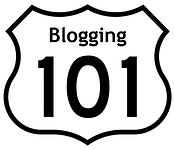 Guest post by Janet Aronica
Guest post by Janet Aronica
Creating consistent and helpful blog content is a great way to build community and trust around your brand for your prospects.
It's how you draw the right potential customers to your website.
But cranking out daily content is challenging.
How can you keep the blog post ideas flowing? How can you keep the content fresh and prevent yourself from re-hashing the same old thing?
Here’s a brainstorm of some ideas to get you started, or just keep you going...
Multi-media and Visuals
1. Do a screencast with Screenr of your product and share it on your blog.
2. Show a step-by-step guide on how to do something in a screencast, how-to video, or show the steps in a series of photos.
3. Create a music video for your company and post it on the blog.
4. Share a cartoon or create an original one.
How-to’s and Tips
5. Write a how-to article. Give instructions with screenshots or photos on the steps someone needs to take to do something.
6. Point out common mistakes in your industry and offer solutions on how to fix or avoid them.
7. Offer a list of benefits for doing something.
8. Share a list of some things to avoid.
9. Relate your how-to content to a current event or a celebrity. Example: “Five _____ Lessons from Lady Gaga” or “What the Election Teaches Us About ____”
Use Existing Content
10. Take the contrarian position – Find someone else’s article that you agree or disagree with. Introduce your blog post with what you specifically agree or disagree with it, and support your argument with a few concise points.
11. Do a weekly or daily links-roundup of relevant news for your community.
12. Find tips in other content, create a list of those tips and give links to those articles as the sources.
13. Share an excerpt from an ebook or white paper with a call to action to download it for the rest of the information.
14. Share an excerpt from an upcoming webinar with a call to action to get the rest of the content in the webinar.
15. Share your slides from a recent presentation.
16. Share conference takeaways.
17. Do a round-up of last year’s/last month’s/last week’s most popular posts.
18. Re-interpret existing content: Collect the top motivational YouTube videos for your audience, top ebooks, top webinars or infographics.
Incorporate Other Platforms
19. Create a Slideshare presentation of new statistics related to your space and share that in a blog post. Tag the Slideshare presentation with relevant keywords for your company to leverage SEO benefits of the platform.
20. Ask a question on Twitter and share the results with a Storify embed.
21. Collect Tweets from a webinar or conference hashtag, show them off with Paper.li (as recommended by FitSmallBusiness.com) and offer your own takeaways in the blog post.
Research
22. Respond to industry research with your own perspective. Offer a fresh angle to spark conversation.
23. Do a survey with Survey Monkey among your community members and create an infographic based on the results.
24. Do a poll of your Twitter community with a Twtpoll or your Facebook community with a Facebook Question and post the results on your blog.
25. Do an in-depth case study about one company, or offer a few examples of how other companies do something successfully.
Thought Leadership
26. Record an interview with an expert in your field and post it to your blog.
27. Get experts to offer a tip and do a round-up of their recommendations.
28. Feature guest posts from industry experts.
29. Publish responses to frequently asked questions about your industry.
30. Create a list of trends to watch.
31. Compare and contrast: Different products, different approaches, different companies, different people, different places, etc.
32. Do a review of other non-competitive products or services that your community cares about.
33. Be a journalist: Be the first in your space to offer industry takeaways about breaking news.
34. Explain what a current event or topic in the news means for your industry or community. Example: “What ____ Means for ____.” “Why _____ Matters for _____.”
35. De-bunk common myths.
Make it About Your Community
36. Interview your favorite customer.
36. Post a Flickr slideshow of pictures from a recent event.
37. Run a contest and give away something relevant to your community.
38. Ask for guest posts from community members.
39. If you have company news to share, talk about it in a way that makes it about the reader. Example: If someone gets promoted, talk about how why were successful. Inspire your audience.
40. Publish a post relevant to the current season or holiday.
41. Outline the top practical use cases for your product, service etc.
Originally posted by our partners at Hubspot on the HubSpot Inbound Marketing Blog.
What do you think? How do YOU generate ideas for your blog? Use the COMMENTS area below to share your advice, questions or opinions...





 One of my marketing coaching clients asked me last week, "David, are there rules for writing copy? I've written a ton of material about what we do and I never know what's going to work..."
One of my marketing coaching clients asked me last week, "David, are there rules for writing copy? I've written a ton of material about what we do and I never know what's going to work..." Guest post by Sandy Barris,
Guest post by Sandy Barris,  Guest column by Nick Usborne
Guest column by Nick Usborne Even the best of us will sometimes run out of things to say.
Even the best of us will sometimes run out of things to say.
 y do not use e‐zines because they simply do not have the time. As a marketing speaker and marketing coach to very busy CEOs, business owners, other professional speakers, and consultants, I hear you.
y do not use e‐zines because they simply do not have the time. As a marketing speaker and marketing coach to very busy CEOs, business owners, other professional speakers, and consultants, I hear you. 